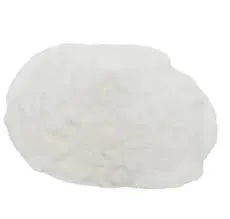
Nov . 26, 2024 09:21 Back to list
hydroxypropyl methylcellulose use
The Versatile Uses of Hydroxypropyl Methylcellulose
Hydroxypropyl methylcellulose (HPMC) is a multipurpose cellulose ether derived from natural cellulose. Its unique properties make it an indispensable ingredient across various industries, including food, pharmaceuticals, cosmetics, and construction. This article delves into the diverse applications of HPMC, highlighting its significance and functionality in modern products.
1. Food Industry Applications
In the food industry, HPMC serves as a versatile food additive. It is commonly used as a thickening and stabilizing agent, enhancing the texture and consistency of a wide array of food products. For instance, HPMC is frequently included in sauces, dressings, and baked goods to improve viscosity and provide a desirable mouthfeel. Additionally, it acts as a fat replacer in low-fat or fat-free products, aiding in moisture retention and enhancing the overall sensory experience.
Another notable application of HPMC in food is its role as a film-forming agent. It is used in creating edible films and coatings that serve to protect food from moisture and oxygen, thereby extending shelf life. Moreover, due to its biodegradable nature, HPMC presents a more environmentally friendly option compared to synthetic alternatives.
2. Pharmaceutical Applications
In the pharmaceutical industry, hydroxypropyl methylcellulose is widely employed as a polymer matrix for controlled drug release systems. Due to its hydrophilic properties, HPMC can absorb water and swell, allowing for a gradual release of active pharmaceutical ingredients. This feature is particularly useful in formulating tablets and capsules that require sustained or extended drug delivery, ultimately improving patient compliance.
HPMC is also utilized as an excipient in various dosage forms, including gels, creams, and ointments. Its ability to provide viscosity and stability makes it suitable for enhancing the performance of topical formulations. Furthermore, HPMC is often used in ophthalmic preparations, as it can provide lubrication and moisture retention for eye drops and artificial tears.
hydroxypropyl methylcellulose use

3. Cosmetic Industry Applications
In the realm of cosmetics and personal care products, HPMC is a cherished ingredient due to its thickening and binding properties. It is commonly found in lotions, creams, and gels, where it improves texture and enhances the stability of formulations. Its use in hair care products, such as styling gels and conditioners, helps in providing hold and manageability, catering to a variety of consumer preferences.
Moreover, HPMC's non-toxic nature and biocompatibility make it an attractive choice for products intended for sensitive skin. Its ability to retain moisture contributes to skin hydration, thus promoting the use of HPMC in moisturizing creams and serums.
4. Construction Industry Applications
HPMC has significant applications in the construction industry, particularly in the formulation of cement and gypsum-based products. As a water-retention agent, it aids in the plasticity and workability of mortar, plaster, and tile adhesives. This property ensures that the mixture does not dry out too quickly, allowing for better adhesion and durability of the final structural elements.
Moreover, HPMC enhances the performance of self-leveling compounds and renders by improving their flow properties and reducing cracking. Its use in these applications promotes energy efficiency, as buildings constructed with HPMC-containing materials often exhibit improved insulation characteristics.
Conclusion
Hydroxypropyl methylcellulose, with its diverse applications across various industries, showcases its multifunctionality and significance in everyday products. From enhancing the texture of food to providing controlled drug delivery in pharmaceuticals, to improving the performance of construction materials, HPMC stands as a testament to how a natural polymer can meet the needs of modern technology and consumer preferences. As industries continue to evolve, the demand for eco-friendly and versatile ingredients like HPMC is likely to grow, paving the way for further innovative applications in the future.
-
Premium Cellulose Ether: Effective Liquid Thickener & Stabilizer
NewsAug.31,2025
-
HPMC for Tile Adhesive: Superior Bonding & Workability
NewsAug.30,2025
-
Premium Cellulose Ether: Effective Liquid Thickener Solutions
NewsAug.29,2025
-
HPMC for Tile Adhesive: Enhanced Bonding & Workability
NewsAug.28,2025
-
tile-bonding-additives-for-stronger-bonds
NewsAug.22,2025
-
construction-grade-rdp-for-wholesale-needs
NewsAug.22,2025







